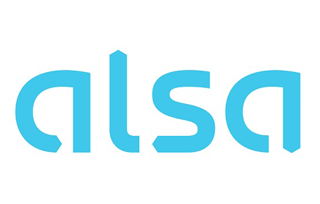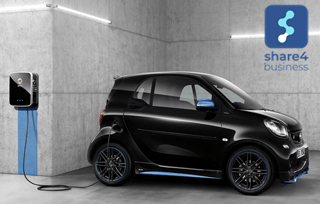SMART, SAFE AND SUSTAINABLE MOBILITY
Smart, safe and sustainable mobility solutions are transforming transportation. By using connected vehicles and automation, they improve efficiency, reduce emissions, and increase safety.ed cybersecurity.

Mobility represents a part of individual freedom and, among other things, enables efficient global supply chains. This means that it holds great importance for our entire society and is a factor of change for it. Today, we are on the threshold of a new and exciting era of mobility: with connected vehicles and infrastructures, intelligent allocation of space among all road users, and autonomous offerings.
On the other hand, the term ‘sustainable mobility‘ means much more than simply reducing greenhouse gas emissions. The transportation sector must not only meet the needs of people today but also the expectations of future generations: this is the central idea of sustainable development.
The constantly changing mobility habits and the growing desire for sustainability and energy efficiency have increased the need for innovative mobility solutions. In this context, in recent years, the concept of ‘smart mobility’ has been established, aiming to use technologies and data analysis to improve mobility and reduce traffic congestion. The idea of Smart Mobility is to make the transportation system more efficient, environmentally friendly, and safer through the use of connected and automated vehicles, as well as intelligent traffic control.
Mobility is currently undergoing very significant changes: automation can make driving safer, electrification can make it cleaner, and digitalization can make it more interactive. At the same time, many people’s attitudes toward mobility are changing. Our mobility is influenced by numerous technical and social advancements. Alternative propulsion systems, autonomous vehicles, networked transport infrastructures, digitalization, and ongoing urbanization are significantly transforming the future of mobility. It is important to accompany and shape this change.
Future trends in movility:
- Networking: The networking of vehicles and other mobility services will continue to increase. This enables the optimization of traffic flows and improves safety.
- Artificial Intelligence (AI): Artificial intelligence will play an important role in improving the safety and efficiency of transportation systems. For example, AI-powered systems can create traffic forecasts and optimize traffic flows.
- Electrification: The electrification of transportation will continue to grow. Electric vehicles are becoming more affordable and can offer an environmentally friendly alternative to conventional vehicles.
- Multimodal Mobility: Multimodal mobility, which combines the use of various modes of transport, is becoming increasingly popular.
- New Business Models: With the introduction of new technologies and services, new business models will also emerge. For example, connected vehicles can create new services.
In general, smart mobility will increasingly adapt to the needs of users in the future and help solve traffic problems and protect the environment.
CLIENTS IN SMART, SAFE AND SUSTAINABLE MOBILITY












TECHNOLOGIES APPLIED IN SMART, SAFE AND SUSTAINABLE MOBILITY
Mobile robotics
Mobile robotics is a fascinating field of technology that focuses on the development of robots capable of moving independently within their environment. These autonomous systems rely on complex algorithms, sensors, and software to detect obstacles, follow paths, and perform tasks such as deliveries or inspections. By understanding how mobile robots navigate and interact, one can grasp the future of automation and artificial intelligence.
The evolution from remotely controlled mobile robots to autonomous mobile robots marks a significant advancement in robotics. While remotely controlled robots require direct commands from a human operator, autonomous robots make decisions based on algorithms and data collected through their sensors. The transition to autonomy involves advanced computing technologies, including artificial intelligence (AI) and machine learning (ML), which enable robots to learn from experience and perform tasks more efficiently.
The advantage of a robot navigating autonomously lies in its ability to orient itself and move independently in a dynamic environment without fixed installations. This allows for the automation of tasks in hard-to-reach, hazardous, or ever-changing environments—on land, sea, air, and even in space. The use of autonomous navigation vehicles has become an integral part of logistics and automated production. The importance of autonomous navigation is also growing in the realms of mobility, inspection, and reconnaissance.
A central aspect of all these applications is autonomous orientation and navigation in at least partially unknown environments. More specifically, this involves recognizing the environment, building and tracking a dynamic map, and ultimately navigating, including reacting to deviations from the initial map. The implementation of these aspects varies depending on the application. For instance, an AGV (automated guided vehicle) typically moves on flat terrain, often in a well-defined environment. However, it must respond to obstacles and meet high personal safety requirements. In contrast, an inspection drone operating in an unknown and hostile environment must continuously record relevant aspects of its surroundings and update a digital map with its real-time position. This allows it to safely determine the route to the target point and avoid collisions.
Various technologies are employed in the world of mobile robotics to develop robots capable of acting autonomously in their environments. These range from sensors that enable robots to understand their surroundings, to software and algorithms that guide decision-making, and advanced communication techniques for interacting with other robots and systems. Together, these technologies provide the foundation for the creation of intelligent, efficient, and autonomous mobile robots. Different application fields require a coordinated range of sensors to perceive the environment, such as laser-based sensors (LIDAR), two-dimensional or three-dimensional camera systems, as well as ultrasonic or capacitive sensors. Application-specific algorithms are used to evaluate and fuse sensor data, enabling localization and dynamic route planning to the intended destination.
Energy for sustainable mobility.
Decarbonizing the transport sector is crucial to achieving the EU’s climate objectives. EU regulations aim to make mobility more sustainable while ensuring connectivity across the EU.
EU countries have committed to making the EU climate-neutral by 2050 as part of the Paris Agreement. To achieve this goal, the EU will reduce its net greenhouse gas emissions across its economy by at least 55% compared to 1990 levels by 2030 and will continue to gradually reduce emissions by 2050.
This includes, among other things: a significant transformation of the transport sector is required, accompanied by a 90% reduction in greenhouse gas emissions by 2050 compared to 1990 levels.
Transport accounts for a quarter of all greenhouse gas emissions in the EU. While emissions in other sectors have decreased significantly, transport-related emissions have increased in recent years. It is crucial to make the transport of people and goods in the EU more efficient and reduce its dependence on fossil fuels.
The objective of the Regulation on the development of infrastructure for alternative fuels is to ensure the development of publicly accessible charging and refueling infrastructure for alternative fuels across the EU for road, air, and maritime transport.
The regulation sets targets for the construction of charging stations and service stations. This also means there will be charging stations at least every 60 km on major roads.
Transport infrastructure
Nowadays, it is still too often thought that infrastructures are strictly separated by sectors: in this case, the energy supply with transport networks, pipelines, and electricity and gas distribution networks. There is transport infrastructure with the road network, railways, and waterways, as well as airports. And then there is digital infrastructure with cellular antennas, radio links, fiber optic networks, and copper cables.
A climate-neutral future and the maintenance of competitiveness require the strengthening and interaction of all these infrastructures: the deteriorated transport infrastructure must be improved and expanded as necessary. Comprehensive mobile network coverage is a prerequisite for the digitalization of transport routes and their equipment with future technologies. New transmission lines that have not yet been created in the electricity grid ensure that green electricity reaches consumers from generation sites. Storage technologies and smart distribution networks must ensure resilience and efficiency. It is necessary to broadly develop charging and refueling infrastructures for alternative propulsion and fuels.
In the future, traffic growth can only occur with ecological mobility. Mobility in Europe will be based on an efficient and connected multimodal transport system for the movement of people and goods, complemented by an affordable high-speed rail network, a dense charging and refueling infrastructure for zero-emission vehicles, and a wide range of renewable energies and low-carbon fuels.
Digitalization will become an indispensable driver for modernizing the entire system, making it smoother and more efficient. Europe must also leverage digitalization and automation to increase technical safety, reliability, and comfort in the mobility sector while consolidating its leading position in the production of means of transport and the provision of transport services, and strengthening its global competitiveness through efficient and resilient logistics chains.
To counteract the lack of structural funding in the future, the maintenance needs of transport infrastructures must be analyzed, verified, and communicated transparently on a regular basis.
Intelligent mobility management
The European Council has adopted a new framework for the deployment of intelligent transport systems to accelerate digital transformation and promote smarter mobility in the EU. The new rules are part of the Commission’s strategy for sustainable and intelligent mobility.
Intelligent transport systems (ITS), such as travel planners, eCall, and autonomous vehicles, are revolutionizing the way people travel; they save time, reduce emissions and congestion, and simplify travel planning.
The revised ITS Directive, adopted by the Council in October 2023, aims to accelerate the availability of digital data (support services such as multimodal travel planners and navigation services) and improve their interoperability. This allows vehicles and road infrastructure to communicate with each other, for example, to warn of unexpected events like traffic jams.
The transition in transportation is advancing, and the mobility industry is changing more than in any other field. Modern and sustainable mobility solutions and autonomous systems require numerous innovations.
Driving simulators
Digital Twins
A digital twin of a city reflects the urban environment, encompassing the landscape, buildings, vegetation, infrastructure, and the movement of people and traffic. With a virtual twin of a municipality, various urban planning scenarios can be simulated, such as construction, energy supply, and traffic management. Model testing helps planners and decision-makers better understand the current and future state of the city.
A city’s digital twin combines data sets from various sources and consists of multiple layers, each serving a specific purpose. The initial layers of a Digital City Twin recreate the city’s landscape, including buildings, infrastructure, and streets. The next level, known as the mobility layer, represents the complex dynamics of mobility within the city.
The digital layer is built by integrating real-time data from sensors and various devices. Smart urban sensors and the Internet of Things (IoT) further enrich this layer. With the support of technologies like artificial intelligence and advanced analytics, the virtual layer of the city’s digital twin is created. Together, these layers provide a comprehensive view of the city and its processes. This new perspective helps address future challenges, benefiting municipal administrations and residents alike.
One key area of application for digital twins is urban planning and design. Planned measures can be tested within the model and their impacts evaluated. Another significant application of urban digital twins is traffic planning and management. Urban digital twins offer an innovative approach to managing the growing complexity of urban mobility and improving traffic flow.
A traffic model, for instance, is already a digital twin of a city’s traffic situation. The virtual representation captures complex, multimodal travel decisions, movement patterns of different transport participants, and corresponding mobility demands. These digital models also include the capabilities of the transportation network. Within this digital sandbox, urban and transportation planners can assess the effects of various transport and land-use options and predict the likely performance of the transportation system in the future. Through traffic simulations, planners gain a better understanding of traffic flow and how different road users interact. Exploring hypothetical scenarios allows for informed decision-making before implementing actions.
Electronic product development
Vehicle manufacturers and stakeholders in the mobility sector can move beyond outdated practices and harness the full benefits of digitalization. By combining industrial and digitalized processes with smart products and services, companies can not only enhance their efficiency but also continuously reinvent themselves to unlock new growth opportunities and revenue streams.
A prime example is the automotive industry, which has already undergone a phase of disruption due to some of these changes or is currently navigating through it. The rise of connected and electrified vehicles, along with new offerings such as “mobility services” (like digitally controlled car-sharing and ride-sharing), has already transformed the automotive industry. These new opportunities position OEMs to rethink, reevaluate, and reinvent themselves. Further changes are on the horizon, driven by artificial intelligence, which, for example, enables the customization of classic cars and, of course, autonomous vehicles.
However, it is not only the products themselves and how they are manufactured that will change but also the relationship manufacturers have with the things they create. As products become increasingly intelligent and connected through a range of digital technologies that are affordable, user-friendly, and therefore more widespread, companies can no longer simply sell them and expect results. Instead, they must maintain remote contact and a constant exchange of data, services, over-the-air updates, and enhancements with the installed base of their products on-site—much like software companies do. In this way, they transform into “managers” of the experiences their products provide.
OUR SMART, SAFE AND SUSTAINABLE PROYECTS
ICONICA: Research in Safe, Intelligent, Connected and Autonomous Driving
The project investigates solutions for connected and autonomous vehicles, focusing on V2I and V2V information exchange using 5G communication networks, which offer high speed and ultra-low latency.
Duration: October 2024 - December 2025
ALTIUMCAT – Optimal system for measuring the displacement of the catenary wire to the pantograph
Optical solutions, profilometric sensors, and ToF sensors will improve accuracy and reduce issues in railway maintenance.
Duration: 2021 – 2023
Mindtooth – Wearable Device for Brain Signal Decoding
Mindtooth will enable truly "intelligent" and "cooperative" interaction between human actors (e.g., car drivers, airplane pilots, factory workers) and the devices around them through the use of brain signals.
Duration: 2020 - 2022
Invecpro – Research for a new generation of professional electric vehicle.
Industrial Research and transversal for a new generation of professional electric vehicle of high value added.
Duration: 2022- 2025
Powercrete – New concrete battery in form of urban road section for photovoltaic energy storage into the smart city environment
New concrete battery in form of urban road section for photovoltaic energy storage into the smart city environment
Duration: 2022-2025
HECATE- Integral Distributed Control System (IDCS)
Design and development of a new Integrated Distributed Control System (IDCS) based on disruptive technology: Big Data tools for data collection, artificial intelligence for event and anomaly prediction, and Blockchain to maximize data security.
Duration: 2022-2023
TWINRAIL – Railway Maintenance 4.0 Based on the Virtual Connection of Mobile Sensors
This project aims to develop an algorithm capable of determining the degree of ballast deterioration during the tamping process, facilitating the identification of areas where ballast should be replaced without additional costs beyond routine maintenance.
Duration: 2021-2023
Cardhin – Dynamic Inductive Charging for EVs
Development of an electric vehicle recharging system using hydrogen based on renewable sources.
Duration: 2020-2023
Share4business – How to manage Carsharing fleets efficiently?
Development of a system that allows smart vehicle fleets to be managed and users interact with the service through a mobile application.
Duration: 2018-2019
FitDrive – Control Device for Drivers
FitDrive is a project whose purpose is to minimize the risk of accidents through the use of a monitoring device for drivers. The goal of determining fitness to drive is to strike a balance between minimizing driving-related road safety risks to the individual, the community, maintaining the driver's lifestyle and their employment-related mobility independence.
Duration: 2021 - 2024









